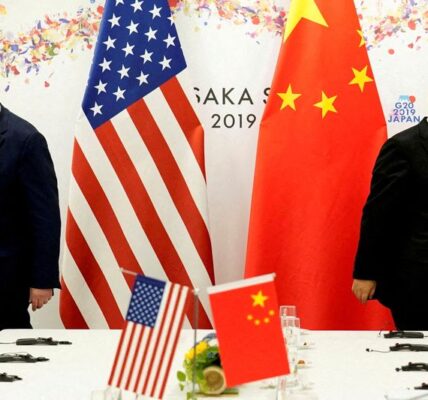HOUSTON – Oil prices rose more than $1 a barrel on Wednesday on concerns about global supplies after Washington issued new sanctions targeting Chinese importers of Iranian oil.
Brent crude futures rose $1.06, or 1.64%, to $65.73 a barrel by 12:18 p.m. EDT (1618 GMT) while U.S. West Texas Intermediate crude rose $1.02, or 1.66%, to $62.35.
The U.S. on Wednesday issued new sanctions targeting Iran’s oil exports, including against a China-based “teapot refinery”, as President Donald Trump seeks to ramp up pressure on Tehran, and drive Iranian oil exports down to zero.
The action comes as the U.S. government has relaunched negotiations with Iran over its nuclear programme this month.
Meanwhile, Iran’s right to enrich uranium is not negotiable, Foreign Minister Abbas Araqchi said on Wednesday ahead of the next round of talks in Rome on Saturday.
The Organization of the Petroleum Exporting Countries (OPEC) has received updated plans for Iraq, Kazakhstan and other countries to make further oil output cuts to compensate for pumping above agreed quotas, the group said on Wednesday, further buoying oil futures.
Elsewhere, U.S. crude stocks rose while gasoline and distillate inventories fell last week, the Energy Information Administration said on Wednesday.
Crude inventories rose by 515,000 barrels to 442.9 million barrels in the week ended April 11, the EIA said, compared with analysts’ expectations in a Reuters poll for a 507,000-barrel rise.
TRUMP TARIFFS
The International Energy Agency said on Tuesday that global oil demand will grow at its slowest for five years in 2025.
The World Trade Organization sharply cut its forecast for global merchandise trade on Wednesday, adding that U.S. tariffs could bring about the heaviest slump since the height of the COVID pandemic.
Trump has ratcheted up tariffs on Chinese goods, prompting Beijing to impose retaliatory duties on U.S. imports.
“The world economy hinges in large part on whether the US and China can come to an agreement and not start a prolonged trade war,” Alex Hodes, director of market strategy at financial services firm StoneX, said in a note.
A Bloomberg report quoted an anonymous source as saying that China wants more respect from the Trump administration before it will agree to trade talks, analysts said.
“A de-escalation of the trade war between the U.S. and China would reduce the downside in economic growth prospects and limit the downside for oil demand growth,” said UBS analyst Giovanni Staunovo.
The uncertainty over trade tensions has led several banks, including UBS, BNP Paribas and HSBC, to cut their crude price forecasts.
“Using a conservative estimate of a 15% decline in global GDP growth, based on the impact of the US-China trade war of 2018-2019, we could see oil demand growth sputter to just 600,000 bpd in 2025, roughly half of our pre-tariff estimates,” said Janiv Shah, vice president of commodity markets analysis at Rystad Energy.
Data on Wednesday showed China’s GDP grew 5.4% year-on-year in the first quarter, beating the 5.1% expected in a Reuters poll, but this growth is unlikely to continue through the year, said PVM Oil analyst Tamas Varga.
Please like, comment, and share this article if you found it helpful and
informative.
For more news check out Big Town Bulletin News
For more from Big Town Bulletin check out Big Town Bulletin

